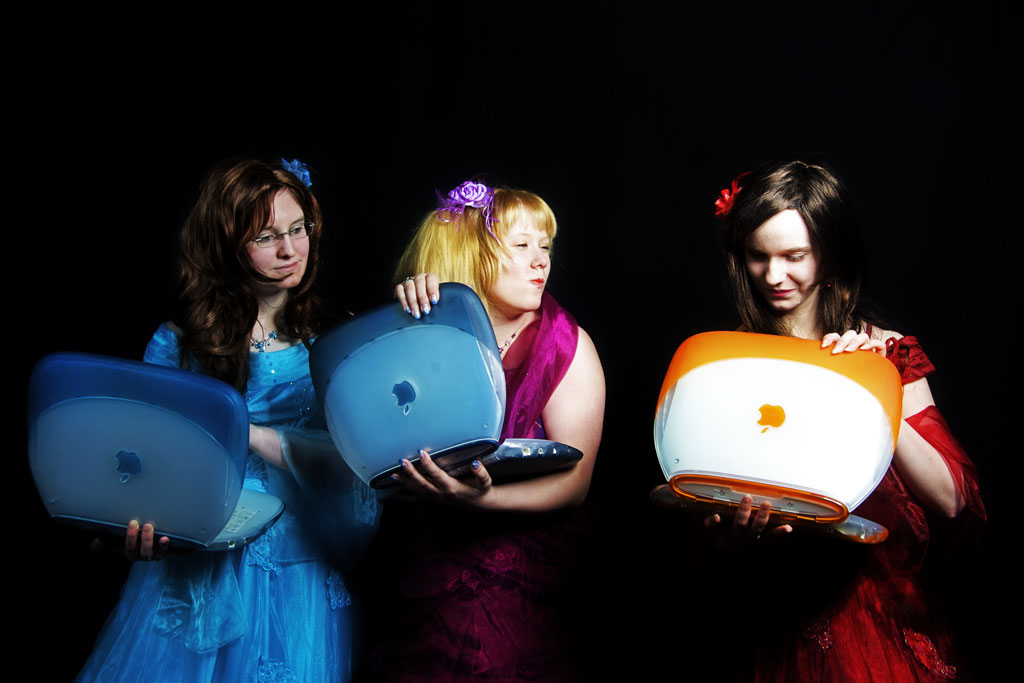iBook heavy and unwieldy ?
- Details
- Parent Category: FAQ
The clamshell iBook was larger than a Powerbook due to its round shape. Due to the rubberized edges and the rounded polycarbonate housing, the iBook should be able to withstand the high stresses of everyday school and study life.

Apple also tried to debunk the weight argument - the clamshell still fared well compared to Windows notebooks. Nevertheless, some made fun of the "bulky" iBook, as the image below with a little girl satirically underlines.
With the second iBook generation, Apple not only brought about a complete design change, but also made the iBook smaller, lighter and even cheaper - unfortunately at the expense of quality.
iBook faster than Windows Notebooks
- Details
- Parent Category: FAQ
When Steve Jobs introduced the iBook, it was not only advertised that the iBook was $200 cheaper than the cheapest Windows notebook, but also twice as fast. Apple published a platform-independent performance test, which should prove that even higher clocked Pentium processors were easily left behind.
iBook: Technical criticism
- Details
- Parent Category: FAQ

The clamshell iBook was an inexpensive notebook for the consumer market, which was offered for a reasonable 1599 US dollars and therefore initially did not include many features that were reserved for the PowerBook line for professional users:
- no stereo speakers
- no PC card slots
- no infrared port
- no built-in microphone
- no SCSI connection
- no sound-in connection
- no Firewire port (available since 2000, Second Edition)
- no video out (available since 2000, Second Edition)
- no DVD drive (since 2000 in the 466MHZ models)
Neither the processor nor the built-in graphics card could be exchanged or upgraded.
From today's point of view, the screen resolution of 800x600 pixels is the most annoying - although the installation of a high-quality TFT screen in a consumer notebook was an absolute novelty in 1999; The poorer quality passive matrix screens were common at the time.
the iMac to go
- Details
- Parent Category: FAQ

The clamshell iBook was the missing link in the existing product range.
The products for the professional sector received the root word "Power" - The "PowerMac" was the desktop model, the notebook for business users was called "PowerBook".
For the consumer market of private users at home, at school and at university, the "i" was selected as the identifying feature. After the colorful "iMac" desktop computers were introduced, Macworld 1999 introduced the "iBook" as Steve Jobs' last missing piece.
The catchy advertising slogan was "iMac to go" - iMac to take away.












